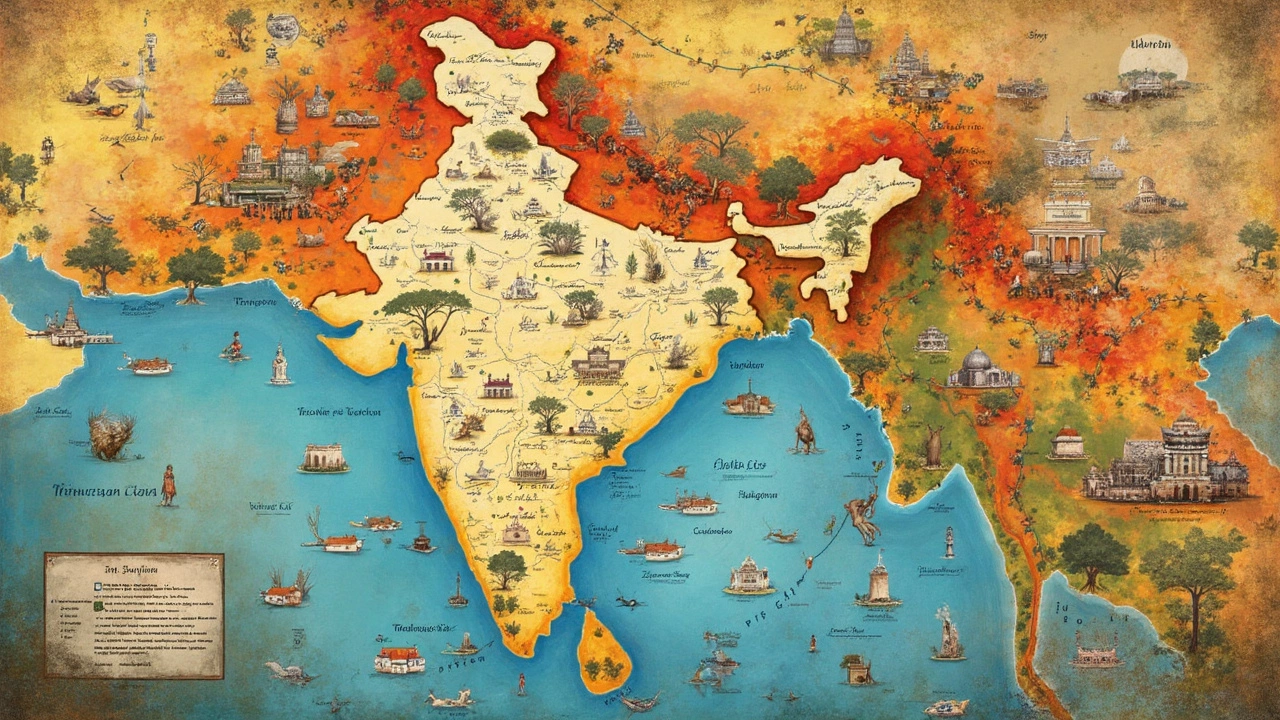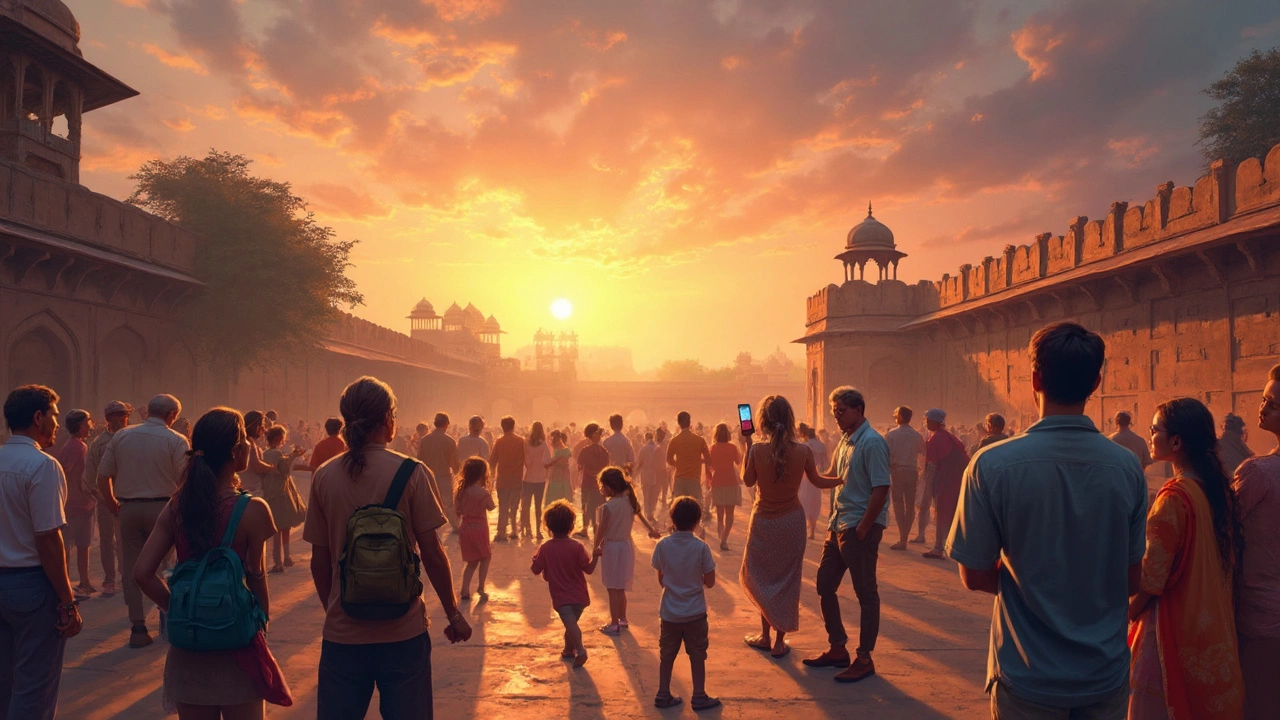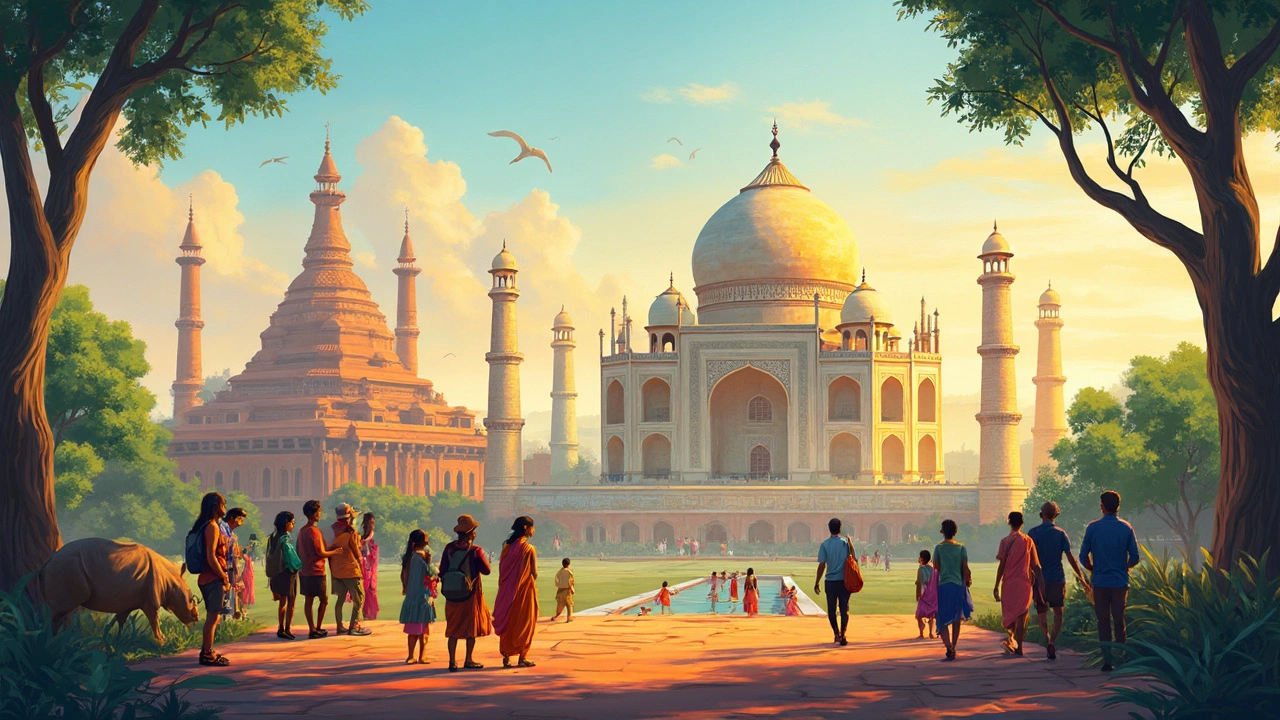If you’ve ever wondered just how many World Heritage Sites you could explore across India in 2024, here’s the answer: the country boasts 42 UNESCO World Heritage Sites right now. That’s a mix of jaw-dropping ancient temples, wildlife sanctuaries, and even a few marvels that locals walk past every day, barely noticing their fame.
But what does it actually mean when a place is called a 'World Heritage Site'? Basically, UNESCO gives that badge to places with outstanding cultural, historical, or natural value. India’s list keeps growing, and every single site has a story—sometimes older than the country itself.
If you’re thinking of making a travel bucket list, these sites aren’t just for history nerds. Visiting even a handful of them is like getting a crash course in what makes India completely unique. And the best part? Whether you’re after spectacular views, mind-blowing architecture, or just want an awesome place for your next selfie, there’s a heritage site for everyone.
- India's 2024 World Heritage Site Count
- The Newest Additions
- Most Popular and Must-See Sites
- Tips for Visiting Heritage Sites
- How These Sites Shape India's Identity
India's 2024 World Heritage Site Count
So, let’s get right to the numbers. As of May 2024, India is home to 42 UNESCO World Heritage Sites. That’s not just a random figure—India actually ranks sixth in the world for the total number of World Heritage spots, just behind heavyweights like Italy, China, and Germany. These sites are scattered across almost every corner of the country, and they’re split into three types: cultural, natural, and mixed (which means they have both cultural and natural importance).
Here’s how it breaks down this year:
| Type | Number of Sites | Examples |
|---|---|---|
| Cultural | 34 | Taj Mahal, Qutub Minar, Jaipur City |
| Natural | 7 | Kaziranga National Park, Sundarbans, Western Ghats |
| Mixed | 1 | Khangchendzonga National Park |
Fun fact: the Taj Mahal was one of the very first Indian sites to land on the UNESCO list, way back in 1983. But India’s not stuck in the past—sites keep getting added. Just last year, the Sacred Ensembles of the Hoysalas (in Karnataka) earned their spot, showing that UNESCO still recognizes India’s living heritage.
Got a favorite region? Maharashtra leads the state-wise chart, with six World Heritage Sites, making it a solid pick for history and culture road trips. Most travelers automatically think “monuments” when they hear World Heritage Site, but don’t skip the parks and reserves—these are some of the best spots for wildlife lovers too.
If you actually want to see these places, UNESCO’s official website and most Indian tourism sites have up-to-date info and guides. Maps and travel suggestions are usually a click away, so you can start planning that dream heritage tour without missing a beat.
The Newest Additions
If you’re up to date with heritage news, you know India’s spot on the UNESCO map keeps expanding. In 2024, there was buzz across travel blogs and news sites when the Sacred Ensembles of the Hoysalas became the latest to join the World Heritage Sites India list. Located in Karnataka, these temples stand out for their intricate carvings and unique South Indian architecture. The Hoysaleswara Temple at Halebidu is a real showstopper, with walls telling age-old stories through detailed sculptures.
It’s not just about temples, either. Over the past few years, UNESCO added sites that aren’t your typical tourist magnets. In 2023, Santiniketan—Rabindranath Tagore’s experimental university town in West Bengal—was recognized. It’s not flashy, but its philosophy and culture are big reasons for its global appeal. Just before that, Dholavira, the ancient Harappan city in Gujarat, made it to the list. Now you’ve got the perfect excuse to geek out over India’s oldest planned city.
| Site Name | Location | Year Added | Type |
|---|---|---|---|
| Sacred Ensembles of the Hoysalas | Karnataka | 2024 | Cultural |
| Santiniketan | West Bengal | 2023 | Cultural |
| Dholavira: A Harappan City | Gujarat | 2021 | Cultural |
Wondering how these places get selected? It’s not a quick process. Nominations take years of paperwork, research, and checklists. The Indian government usually pushes sites that aren’t just popular but have a real story and unique features. That’s why you’ll see both ancient ruins and living cultural hubs getting global recognition.
So if your travel plans need a new twist, it’s worth looking up these fresh World Heritage Sites. Usually, they’re less crowded than classics like the Taj Mahal, which means you get to explore while supporting local communities who take pride in their heritage.

Most Popular and Must-See Sites
Let’s be real: even if you had a year off, you’d never run out of things to see in India’s World Heritage Sites bucket list. A few places stand above the rest, whether for their jaw-dropping looks, wild stories, or just how many selfies people take there. If you’re new to India’s heritage scene or just looking for those top-trending sites, here’s where to start.
World Heritage Sites India are stacked with icons like the Taj Mahal in Agra. You’ve seen it in a million photos, but there’s something about being there in person that actually takes your breath away. Built by Shah Jahan for his wife Mumtaz Mahal, the Taj isn’t just a symbol of love; it’s one of the most recognized buildings in the world. Every day, thousands pile in, and not just tourists — locals keep coming back too.
Next, you have the Qutub Minar in Delhi. This one’s the tallest brick minaret on earth, standing at a wild 72.5 meters. The detailing and old school engineering are unreal. People often don’t realize it’s been around since 1192 AD.
Chhatrapati Shivaji Maharaj Terminus in Mumbai blends Victorian-Gothic with Indian architecture in ways you rarely see elsewhere. Don’t just rush to catch your train here. Take a look at the domes, turrets, and stained glass — seriously, even daily commuters sometimes stop and admire.
For those wanting a bit more nature, Kaziranga National Park in Assam is your go-to. It has the highest number of wild one-horned rhinos anywhere. Want a quick wildlife fact? As of 2024, about 2,700 rhinos roam this park.
Feeling spiritual? Don’t forget the Sun Temple at Konârak in Odisha. Shaped like a massive stone chariot, it’s mind-blowing how detailed the carvings are, even after 800 years of salty sea wind.
- Taj Mahal (Uttar Pradesh): Iconic mausoleum, white marble, best at sunrise.
- Qutub Minar (Delhi): Towering minaret, ancient inscriptions, climb partway up for views.
- Chhatrapati Shivaji Maharaj Terminus (Mumbai): Historical railway station, incredible architecture, still bustling every day.
- Kaziranga National Park (Assam): Rhinos, tigers, elephants, and a safari worth waking up early for.
- Sun Temple, Konârak (Odisha): Stone wheels, intricate carvings, UNESCO tag since 1984.
Here’s a great way to sum up what makes these places stand out, in the words of UNESCO’s India office:
“Heritage Sites turn India’s vast history into tangible experiences: you stand where emperors did, walk paths of ancient travelers, and witness nature that’s been protected for generations.”
So if you’re starting your World Heritage Site journey, mark these on your map first. There’s no better way to see what stories and sights India holds.
Tips for Visiting Heritage Sites
Exploring World Heritage Sites in India can be epic if you know what you're doing. Here’s how to make the most of your trip while avoiding rookie mistakes.
- Plan ahead. Sites like the Taj Mahal or Qutub Minar get slammed with crowds, especially during holidays and weekends. Buy tickets online where possible, and try visiting early in the morning or late in the afternoon for a calmer experience.
- Respect the rules. Many places ban photography in certain areas, especially inside monuments or temples. Watch out for signs and, if in doubt, ask the staff. Breaking the rules can mean fines or even being asked to leave.
- Dress comfortably but appropriately. Some sites, especially religious ones, require modest clothing. Lightweight clothes work best, but remember to cover knees and shoulders in these spots.
- Hire a local guide if you really want all the cool stories and context. Audio guides are available at several sites now—places like the Ajanta Caves or Fatehpur Sikri offer them in multiple languages.
- Stay hydrated. Many famous sites are in hot, dry areas—like Hampi or the Sun Temple in Konark. Carry a reusable bottle and refill at safe drinking water stations along the way.
- Look beyond the obvious. The big names are famous for a reason, but spots like Rani-ki-Vav (Patan) or the Great Himalayan National Park don’t see as many tourists and offer a totally different vibe.
- Check accessibility details in advance. Not every site is wheelchair-friendly or easy on the knees—think hilltop forts like Chittorgarh. Government and UNESCO sites usually mention these details on their webpages.
Quick look at best months for popular sites:
| Heritage Site | Best Time to Visit | Entry Fees (Indian/Foreign) |
|---|---|---|
| Taj Mahal | Nov - Feb | ₹50 / ₹1100 |
| Ajanta & Ellora Caves | Oct - Mar | ₹40 / ₹600 |
| Qutub Minar | Oct - Mar | ₹35 / ₹550 |
| Hampi | Nov - Feb | ₹40 / ₹600 |
| Great Himalayan National Park | Apr - Jun, Sep - Nov | ₹50 / ₹200 |
Don’t forget: Many World Heritage Sites India require bags to be checked outside, and drones are usually a no-go. To top it off, always keep some cash handy—smaller sites often don’t take cards, and mobile signal can be patchy in rural areas. With just a bit of prep, hitting these sites can go from stressful to smooth.

How These Sites Shape India's Identity
Ask anyone what makes India stand out, and it won’t take long before they mention something found on the World Heritage Sites India list. These aren’t just cool places to visit—they’re like living time capsules that tell us who we are as a country.
These sites grab attention because they cover every part of Indian life: religion, politics, nature, art, and community. For example, the Taj Mahal isn’t just a pretty building. It’s a symbol of love, but it’s also a sharp lesson in Mughal ambition and craftsmanship. Then there’s Kaziranga National Park, keeping two-thirds of the planet’s one-horned rhinos safe. Every site adds a new thread to India’s story, which is probably why UNESCO keeps bumping up the count each year.
Here’s what else they bring to the table:
- Bringing in tourism money: Delhi’s Qutub Minar, Goa’s churches, and Jaipur’s city sites bring in millions of visitors, helping small businesses and putting local crafts on the global map.
- Keeping traditions alive: Sites like Sanchi Stupa and Rani ki Vav make sure rituals, dances, and festivals stick around—not just for show, but as part of real community life.
- Boosting national pride: When UNESCO puts a site on the map, it’s like getting an international thumbs-up. Locals and visitors start paying more attention, sometimes even helping with cleanup or restoration drives.
And there’s data to back it up. Here’s a quick table with a few numbers that show just how much these places matter:
| Site | Year Inscribed | Annual Visitors (Estimate) |
|---|---|---|
| Taj Mahal | 1983 | Over 6 million |
| Qutub Minar | 1993 | 3.8 million |
| Kaziranga National Park | 1985 | 230,000 |
| Jaipur City | 2019 | 2.2 million |
It’s no exaggeration—these heritage sites don’t only bring crowds but also build a sense of ownership and pride. So next time you pass that old fort or walk by a protected park, you’re not just looking at old stones or pretty landscapes. You’re seeing what’s at the heart of India’s identity, even in 2024.
